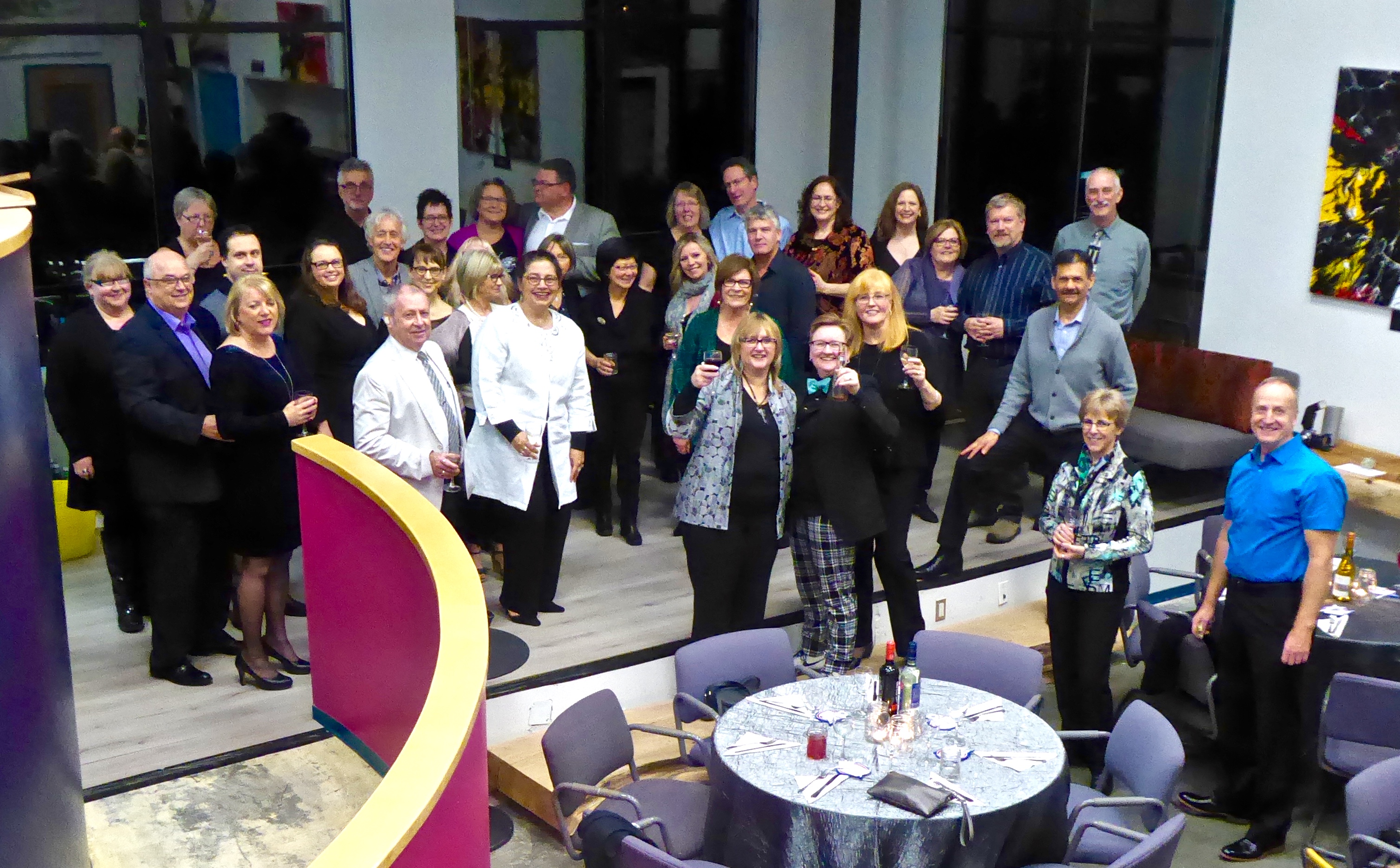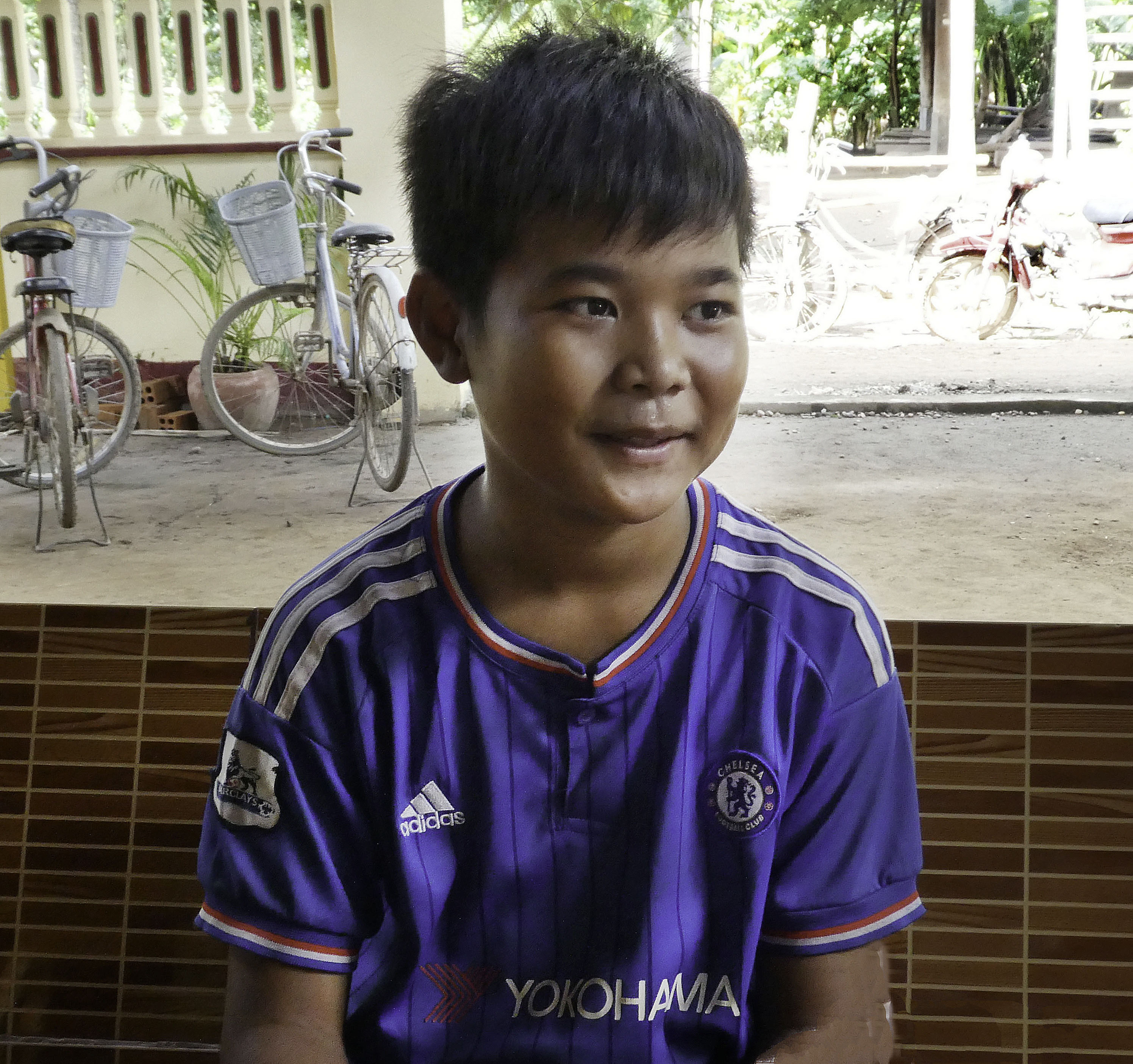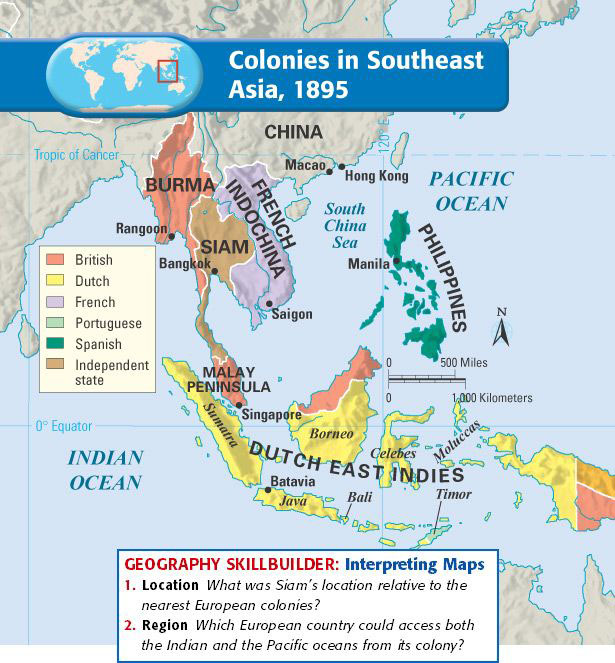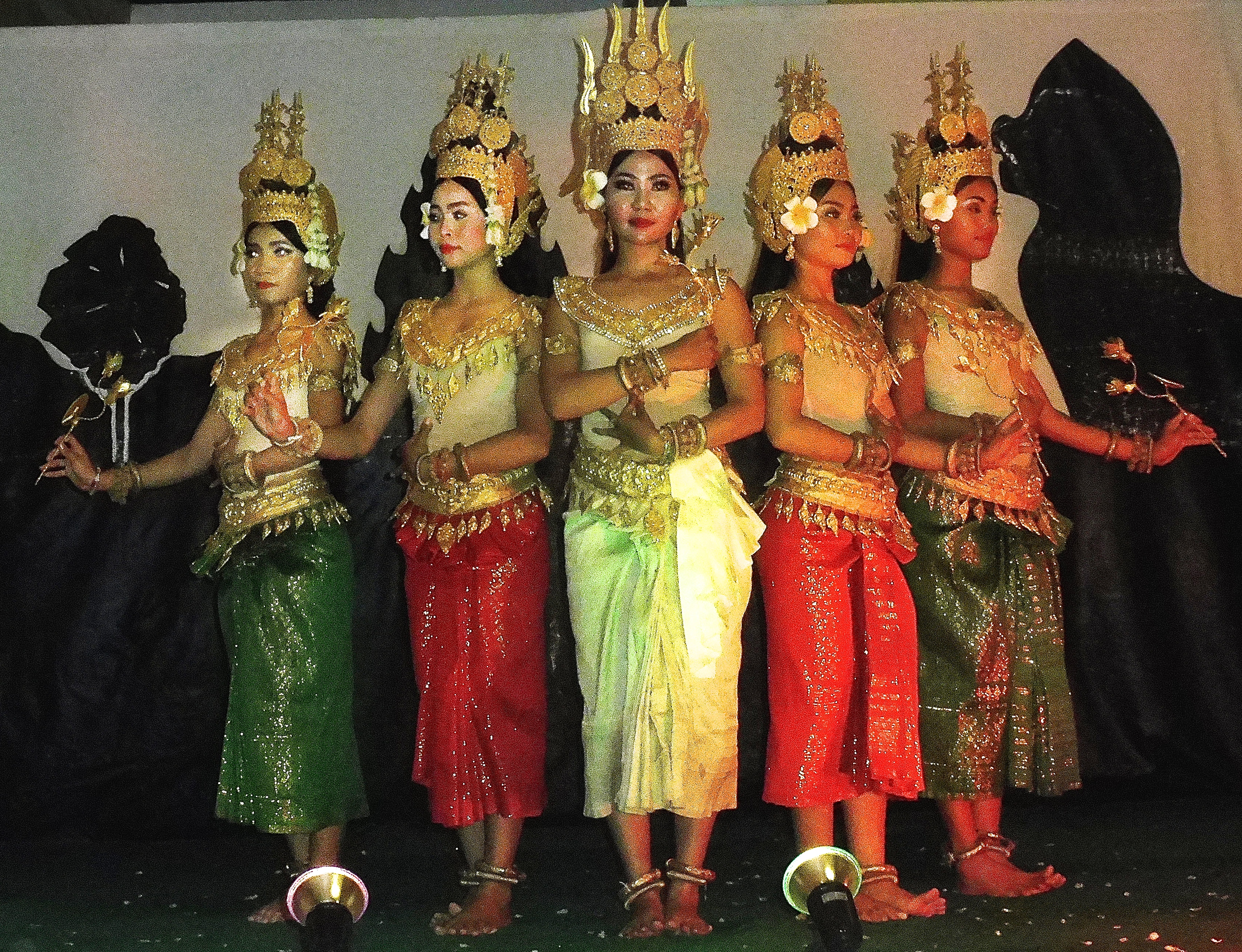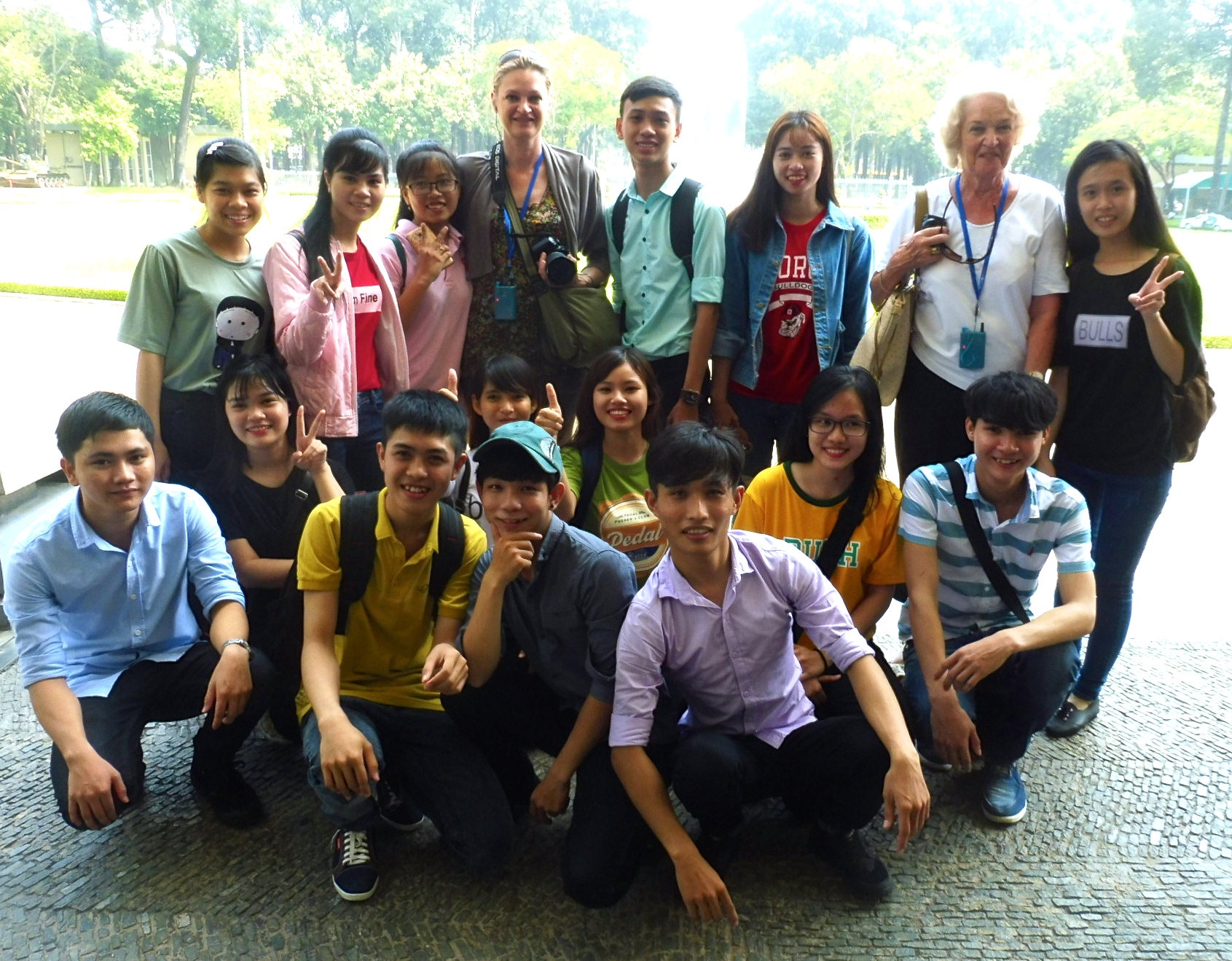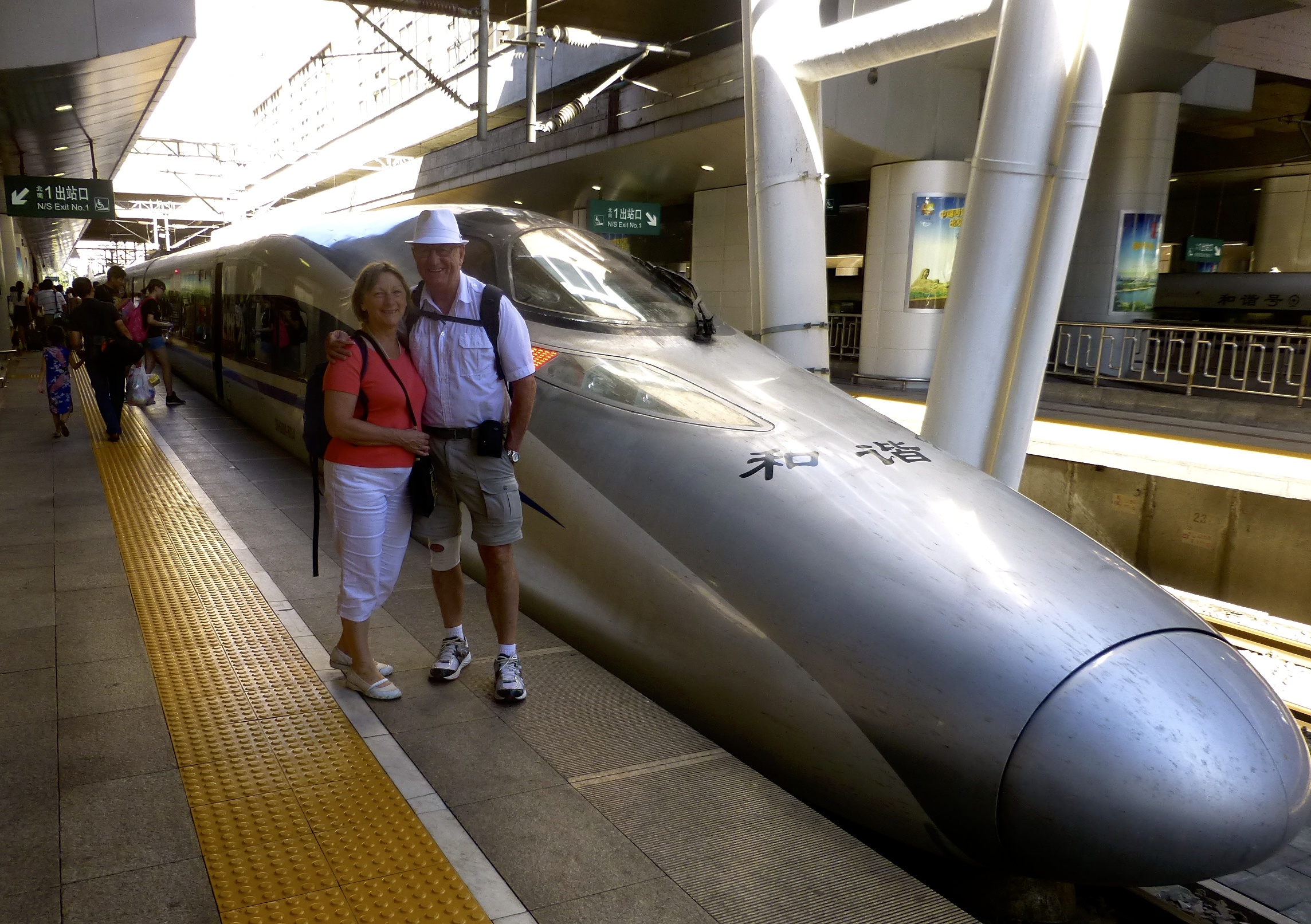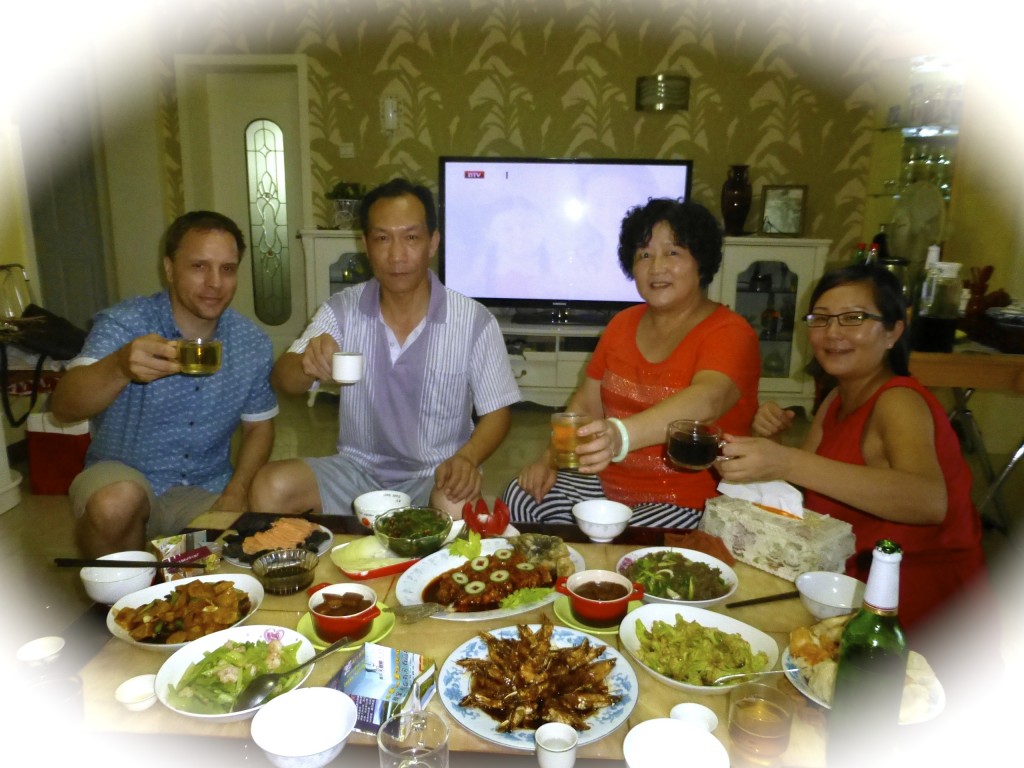Expedia CruiseShipCenters, Sidney
Annual Awards Night Photos
Expedia CruiseshipCenters, Sidney
Saturday, January 6, 2018
A fun time for everyone at the McTavish Academy when Elaine Kirwin, owner/manager of the Sidney based agency, hosted her Annual Expedia CruiseshipCenters Awards Event. With Bronze, Gold, Silver, Platinum, Ruby and Diamond awards being handed out, there was plenty of buzz about the successes of 2017 and what’s in store for 2018. With two men now counted among the crew of twenty-five, it seems the reverse glass ceiling was finally breached.
Elaine (photo right) has much to be proud of, as over the last two decades she has built a skilled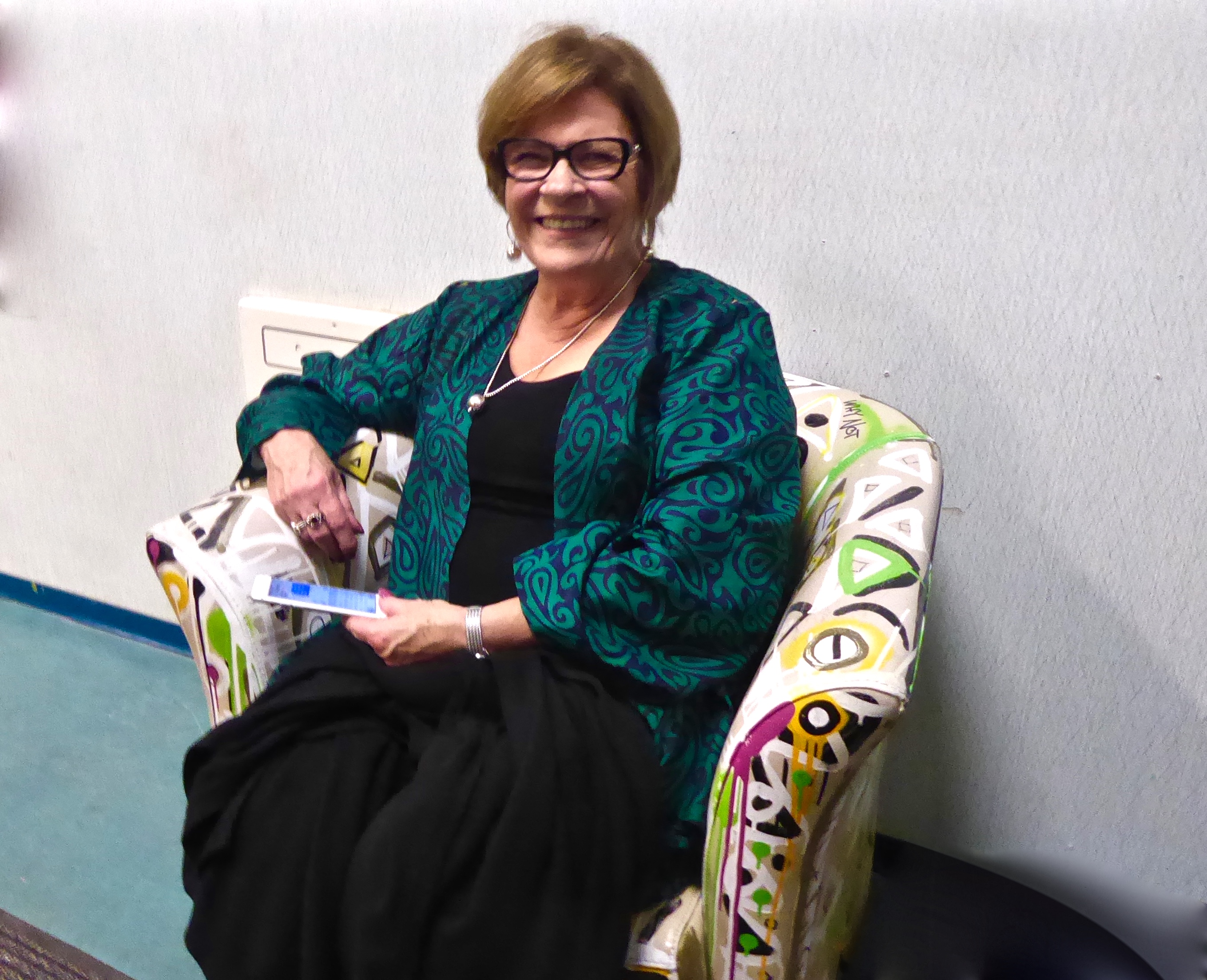 team of Travel Professionals, and this has led to the agency receiving several Provincial and National Awards for Service Excellence and Achievement.
team of Travel Professionals, and this has led to the agency receiving several Provincial and National Awards for Service Excellence and Achievement.
The awards include two National Awards, as well as being #1 in Western Canada for Uniworld Boutique River Cruises; and in the Top 3 in Western Canada, for the past five years, with Premier Ocean Cruises – Holland America and Celebrity; and Scenic River Cruises. For a small agency, these are noteworthy achievements.
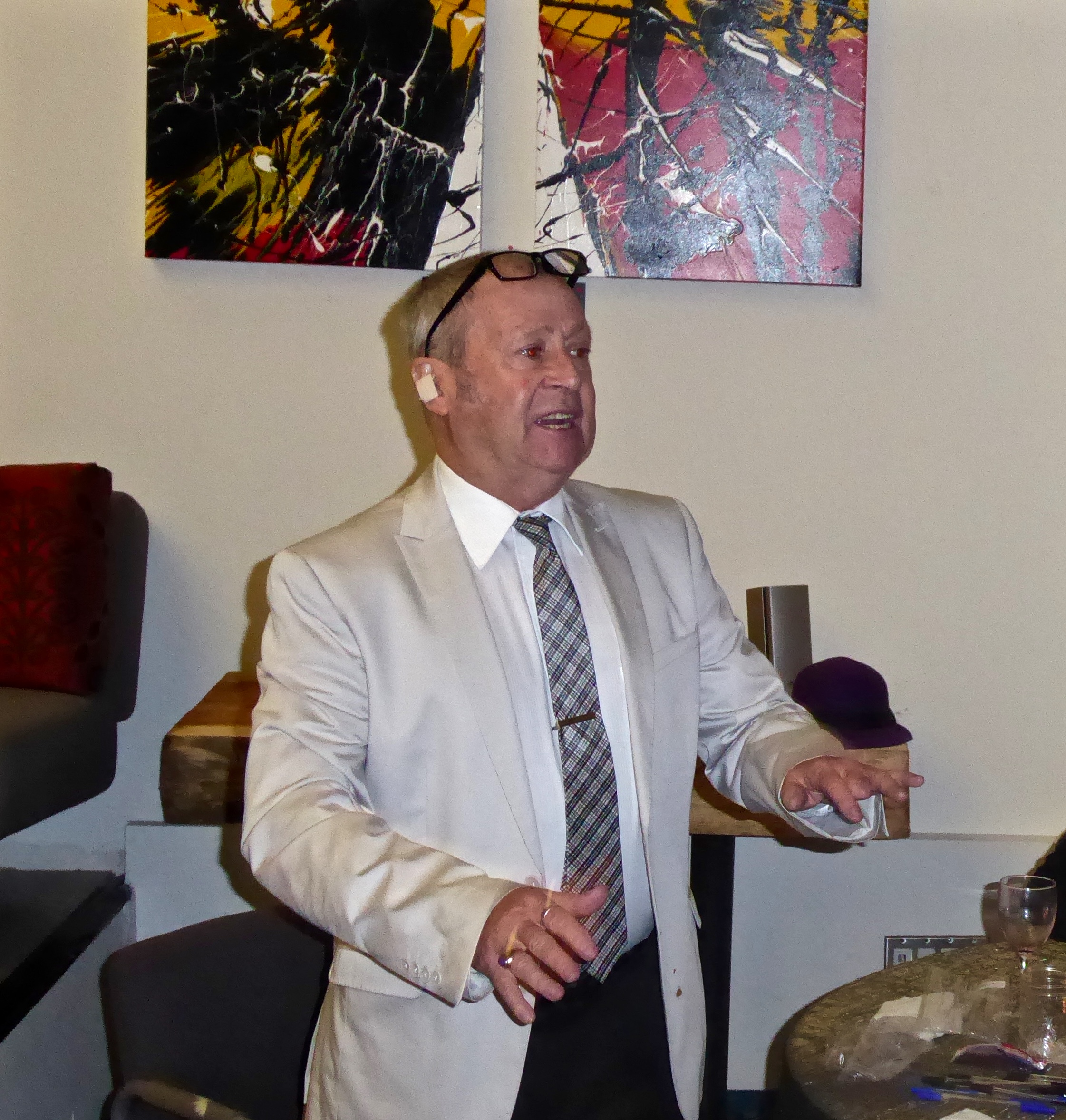 As part of the festivities, John Lovel (left), a representative with Emerald Cruise Lines, and Elaine handed out several gifts during the fun and games held after dinner. The competition for prizes was stiff with ties broken during the no holds barred, “rock, paper, scissors” playoffs.
As part of the festivities, John Lovel (left), a representative with Emerald Cruise Lines, and Elaine handed out several gifts during the fun and games held after dinner. The competition for prizes was stiff with ties broken during the no holds barred, “rock, paper, scissors” playoffs.
Many thanks to Elaine, her daughter Katie and the catering team from the Airport Spitfire Grill for tasty appetizers, meal, fine wines, and cold beer.
A photo album of the evening’s events is linked here: Awards Night
Cheers,
Harold
Notes: I didn’t manage to get a photo of everyone with their award. If you have a photo(s) you like me to add, please send by email to: lowerislandsoccer@shaw.ca or pass along to Lynn. H.
You may link into other travel background stories posted by Harold and Lynn on our McNeill Life Stories Facebook Page. The photo albums will usually provide a link to the background story. H.
(359)
Climate Change: Ground Zero
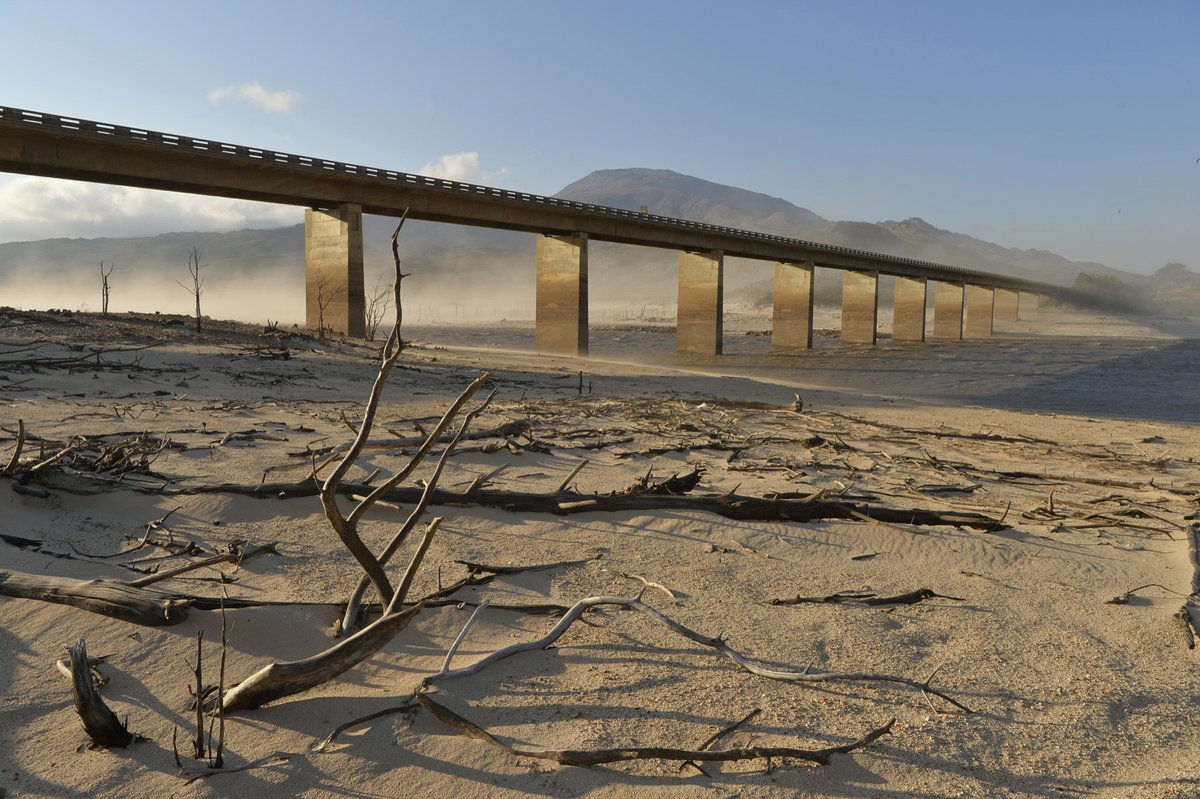
Climate Change, Ground Zero: April 21, 2018
The day the taps will be turned off in Cape Town, South Africa.
(Photo album of Cape Town)
(Jan 28, 131)
As we arrive in Cape Town, South Africa, a Metropolitan area of 3.7 million, a large sign at our airport advised the city was experiencing a severe drought and while the sign urged us to 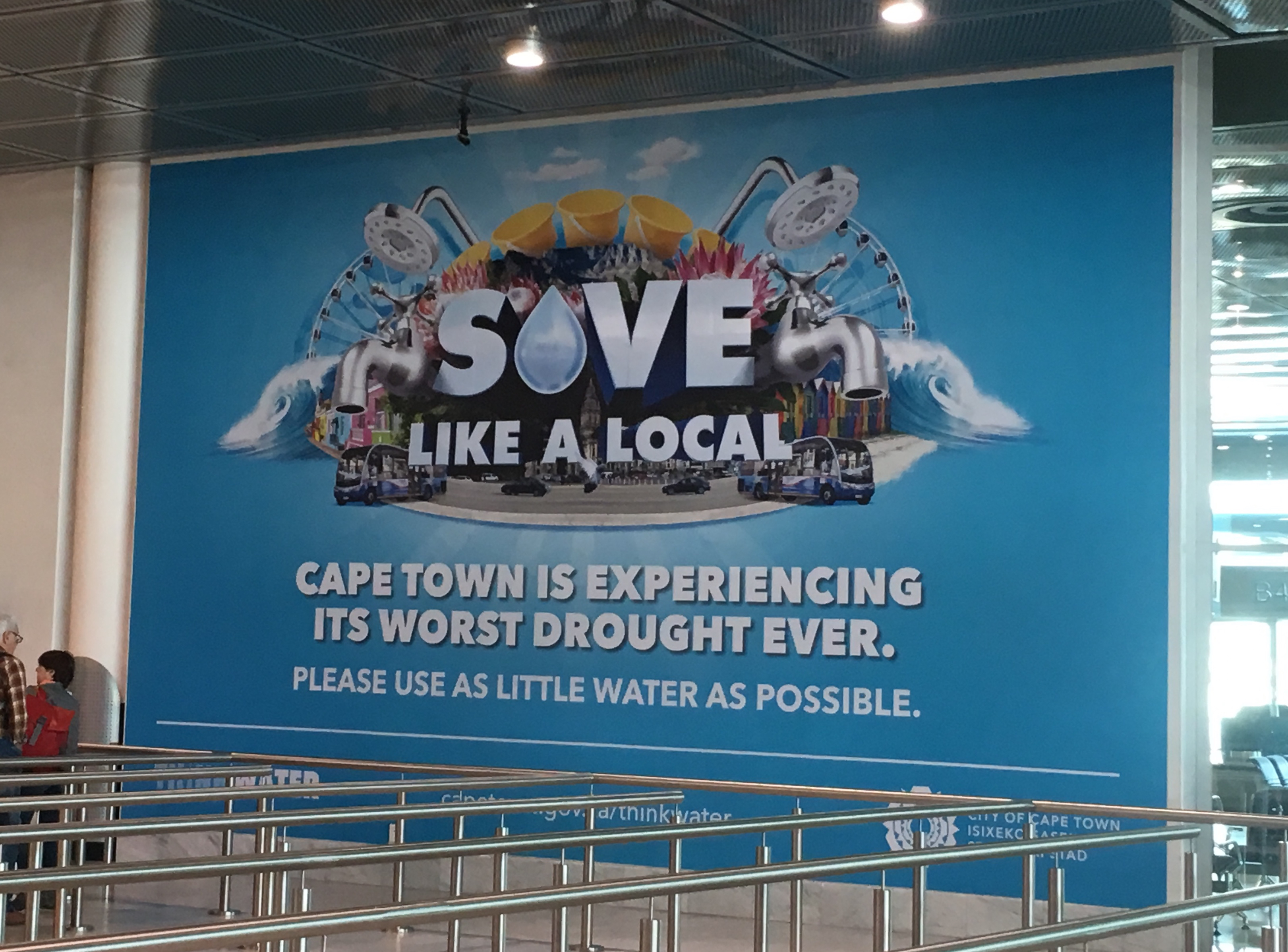 conserve, the welcoming nature of the sign did not impart the notion of just how critical the situation had become.
conserve, the welcoming nature of the sign did not impart the notion of just how critical the situation had become.
Photo: This was the sign. Perhaps a photo of the Cape Reservoir (above), along with a hard message might have had more impact of just how critical things are now, not years from now.
(466)
The Rice Paddy
Student at a Cambodian Country School (photo by Esther Dunn)
We had the good fortune to visit an elementary school in a remote area along one of the tributaries of the Mekong River, a place where welcoming and exuberant children could barely wait to demonstrate their English language skills. “What’s your name.” and “How old are you?” were the favourites, but that was just the opening of two hours of interaction with the students.
NOTE: Three Videos of our time in Viet Nam and Cambodia are linked at the end of the story. For those seeking more background of our travels with Uniworld, link here. Regards Harold and Lynn
Lynn and I spent part of our time with a ten-year-old boy (photo above) who appeared to be the oldest in the class. Although a bit shy, he focused intensely on getting the wording of his questions correct, then intently listened as we answered. Had he been born forty years earlier, he could well have been the boy featured in part of the story below.
Part I: Introduction to SE Asia and a Short Story from Cambodia
To gain an understanding of the progress the people of Indochina have made over the past 25 years, take a few minutes first to watch the three slideshows linked in the footer. While incredible natural and manmade beauty greet you at every turn; the happy, healthy and carefree people you see at school, work and play today, contrasts sharply with immense challenges the people faced from 1940 – 1990. Perhaps you are aware of these challenges and the progress made, but we weren’t and the more we learned, the more amazing it all became.
This series begins with a short, personal story which took place in Cambodia in the late 1980’s, a story of one boy’s quest to survive. His story was similar to that experienced by thousands of men, women and children whose lives were taken or shattered by war, genocide, starvation and disease. This story was related to us over several parts by our Cambodian guide and takes place during the height of Pol Pot’s campaign of genocide.
(759)
The Indochina Wars: 1940 – 1990
Southeast Asia – Colonial Powers
Colonial Powers, as listed above, played a large role in the ebb and flow of the fortunes and misfortunes of Southeast Asia from the early 1800’s onwards. The French played a dominant role in Viet Nam, Cambodia and Laos and while it ended in war there are still many positive reminders of the occupation.
Part I: Introduction and the Rice Paddy
Part II: Indochina Wars: 1940 – 1990
Part III: Resilience of the Human Spirit (passcode required as post under revision)
Part IV: The Future Belongs to the Young
Part V: Travelling with Uniworld (In progress)
Part 11. Indochina Wars: 1940 – 1990
Introduction
Ordinary people do not start wars unless they are oppressed. Governments or dictators make wars with an ideological or expansionist purpose in mind. When this happens, ordinary citizens are pushed to fight whether they want to or not. This was no better expressed than in Alfred Lord Tennyson’s poem, “The Charge of the Light Brigade”:
“Forward, the Light Brigade!”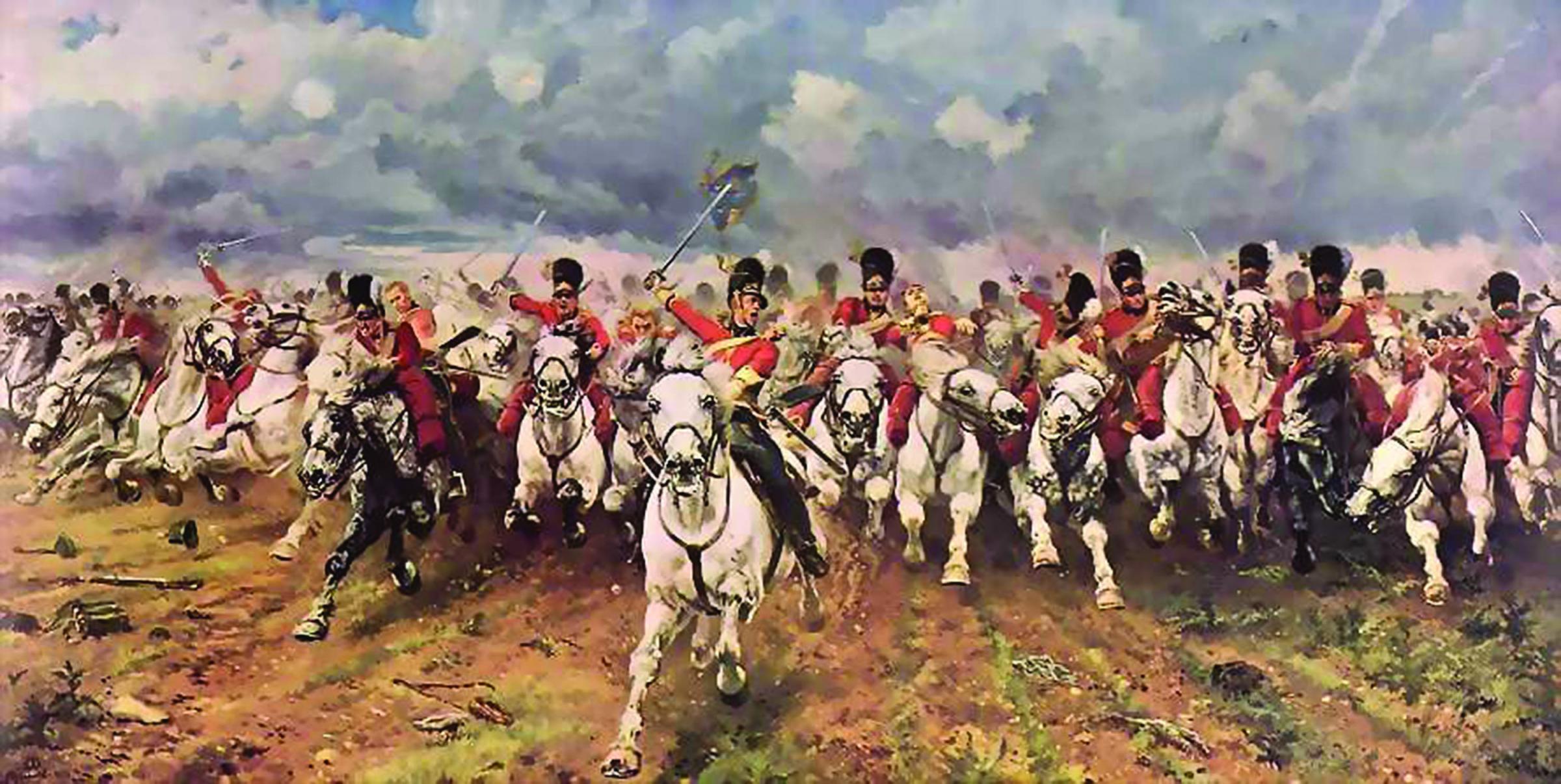
Was there a man dismay’d?
Not tho’ the soldier knew
Someone had blunder’d:
Theirs not to make reply,
Theirs not to reason why,
Theirs but to do and die:
Into the valley of Death
Rode the six hundred.
Such was the case in Indochina where not six hundred, but an estimated 8000 times that many would be driven into the valley of death. The Viet Nam or Second Indochina War, was just the second part of fifty years of war that began when the Japanese occupied French Indochina in 1940. Following the departure of the Japanese and the French again occupied, then Communist North Viet Nam (formed in 1945 after the war) (3), began a push to remove the French who resumed their Colonial control status that was ceded to the Japenese for a few years. One occupying force simply replaced another.
(872)
Resilience of the Human Spirit
These young women were part of a group of Cambodian folk dancers who performed during our time in Siem Reap. The gentle movement of these dancers and their male counterparts was mesmerizing and clearly express the inner strength and peacefulness of the people.
Photos in these albums were selected from those taken mainly by Esther and Harold. In a few cases, representative photos selected from the Web.
November 11, 2016: Least We Forget
Remembrance Day in Canada (Link Here)
Veterans Day in the United States (Link Here)
Part I: The Rice Paddy
Part II: Indochina Wars: 1940 – 1990
Part III: Resilience of the Human Spirit
Part IV The Future Belongs to the Young
Part V Cruising the Mekong with Uniworld (being written) December 4. This part was split off to Part V. Part IV is being readjusted.
Part III: Resilience of the Human Spirit
(857)
The Future Belongs to the Young
Young People – A Majority in Viet Nam, Cambodia and Laos
The photo was taken in front of the Presidential Palace in Saigon (October, 2016 hdm).
This group of young people wanted a photo with two of our group from South Africa with whom they had been chatting. Virtually everywhere you travel in Viet Nam and Cambodia you will find young people eager to exchange a few words and to have a photo taken with a tourist. Look at those wonderful smiles.
Part I: An Open Letter
Part II: Indochina Wars: 1940 – 1990
Part III: Resilience of the Human Spirit (in progress, Password Protected)
Part IV The Future Belongs to the Young
Part V River Cruising (in progress)
Part IV: The Future Belongs to the Young
The title, of course, is used in a figurative sense. As I grow older and particularly over the last 25 years (50-75), I have become convinced that forging a better world must be placed in the hands of positive, forward-looking young people. You might also include older people, but only if they have not become jaded and are willing to debate the issues with an open mind. Any discussion that focusses on Us versus Them is going nowhere.
Lynn and I have travelled to many countries that have only recently emerged from war or were controlled in whole or in part by vicious tyrants. It was pretty easy to tell how well the country was doing by simply talking to young people. If the young are happy and forward looking, we felt assured the country was moving in a positive direction, but if they were looking for a way out, it was a good bet the country was not doing all that well.
(307)
A Canadian Vision of Planet China: Part II
Harold and Lynn in August 2013 waiting to board the Bullet Train for Shijiazhuang, China. Join us for the continuation of our adventure with nephew Lorin Yochim. This photo is sample of our travel gear minus the two small Tilly suitcases whose little wheels have logged tens of thousands of miles.
April 12, 2014, This post is currently under construction. Photos to be added by Sunday, April 13.
Link Here to Part 1 of the China Story
Link Here to Full Photo Story leading to and in Shijiazhuang, China
Introduction to Part II
The whirlwind we left behind in Beijing and the surrounding country left of breathless. We met so many people who hosted us in the most welcoming ways. Granted, the circles in which Lorne and his family travelled likely placed them in the “well to do” strata of Chinese Society, I would say it was still “middle class” as we might find in many other parts of the world including Canada. Poverty was clearly evident and, based on stories told by Lorin,
I think there is a much larger segment of Chinese society who suffer from what we consider the “essentials” of life, far more than we would see in many of the dozens of countries we have visited across Europe, Australia, New Zealand, and Japan as but a few examples. The other think that was evident, is a feeling the country is tightly controlled politically and economically. If you are on the “inside” things are pretty good, but if on the outside, I really don’t know as I never had a chance to taste that part of Chinese life, as, by all accounts we are “rich Canadians”. Now back to touring.
As a partnership between a senior ‘wannabe’ and one who is well established, Lynn and I are pretty adept at handling ‘free-style’ travelling as we have travelled a good part of the world with one small suitcase and backpack each. We seldom made reservations more than a day at a time and left our means of travel (other than destination airlines) pretty much up to chance. While we never hitchhiked, we usually found an economical means of travel within and between connected countries. China, however, presented a few challenges, not the least of which was the language barrier. English is definitely not a second language in China as they likely have twenty languages of their own to keep us off balance.
While foreign tourism in China is growing at an exponential rate, most tourism is still domestic; therefore, the need for local English and other language service remains very low. Even at the main airports and train stations, it can be difficult to find an English-speaking attendant so, for a visit shorter than five years, learning the language is not an option. Such was not the case for Lorin as he was able to handle the language barrier in a manner that kept the Chinese off balance. There’s no better way to surprise people who think you don’t know what they are saying and then enter the conversation in their language as if you were a next door neighbour. Lorin, that loveable chap, could stop all conversation in a small restaurant filled with Chinese only patrons when he began to question the waiter or some other person in their language.
Because we had such close contact with Lorin, his family and friends, our trip was turned from one in which we would have been stuck in the usual ‘tourist’ pack to one filled with continuous adventure in the most out of the way place. Join us for Part II as we head out from Beijing on a train that will soon touch a third the speed of sound and take us through a countryside filled with the old and new. In our travels to date, China provides the best example of a country where modernity is extinguishing the past at the breakneck speed of a Bullet Train.
(3792)
A Canadian Version of Planet China
It would not be many days into our visit before we understood food would become a key part of our China experience.
Here we were hosted to a sumptuous home cooked meal by the cousins (centre) of Lorin and Jin.
Link Here for Part II of this Story
Hello China, Here we Come Part 1 (see footnote 1)
Over a couple of weeks last month Lynn and I had an opportunity to take a whirlwind tour of China. As it worked out, our amazing nephew Lorin (2), his wife Jin An and son Laur were living in Beijing, so it was an easy decision. We often wondered about that, magical, mysterious country and felt a visit was a perfect way to sort fact from fiction.
Is the country completely polluted and is the traffic any worse than Vancouver? Are the people pushy or polite? Are the Chinese so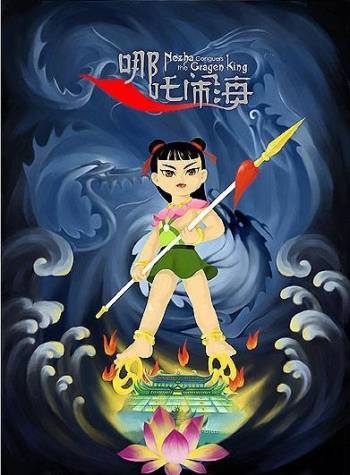 clever and determined they will one day dominate the world? Could anyone or anything stand in the way of a technologically advanced country with a population of 1.5 billion and so much money they have no idea how to spend it? Are they on their way owning the United States as well as all the oil in Canada? How about a simple question – can a stray dog or cat survive in China?
clever and determined they will one day dominate the world? Could anyone or anything stand in the way of a technologically advanced country with a population of 1.5 billion and so much money they have no idea how to spend it? Are they on their way owning the United States as well as all the oil in Canada? How about a simple question – can a stray dog or cat survive in China?
Insert (Web): Top 10 in China: Nezha Conquers the Dragon King. The flower, bottom centre, was often observed floating in water filled ponds in many temples.
Fiction, fact and myths about China are so thoroughly intertwined, that no one seems to know for sure and everyone has an opinion. While we cannot explore every facet of life in China, we will sort out what we can.
So with Passports, Visa’s and maps in hand, we donned our ‘rose coloured glasses’ and caught an Air China flight out of Tokyo after spending a couple of weeks in that country. To be sure, we would find many differences between Japan and China. Just to make certain we could see things clearly, we each grabbed a pair of polarizer clip-ons. Thank you for joining us in Part I of this three-part series. PS We have taken plenty of pictures to back up our observations.
(3786)

